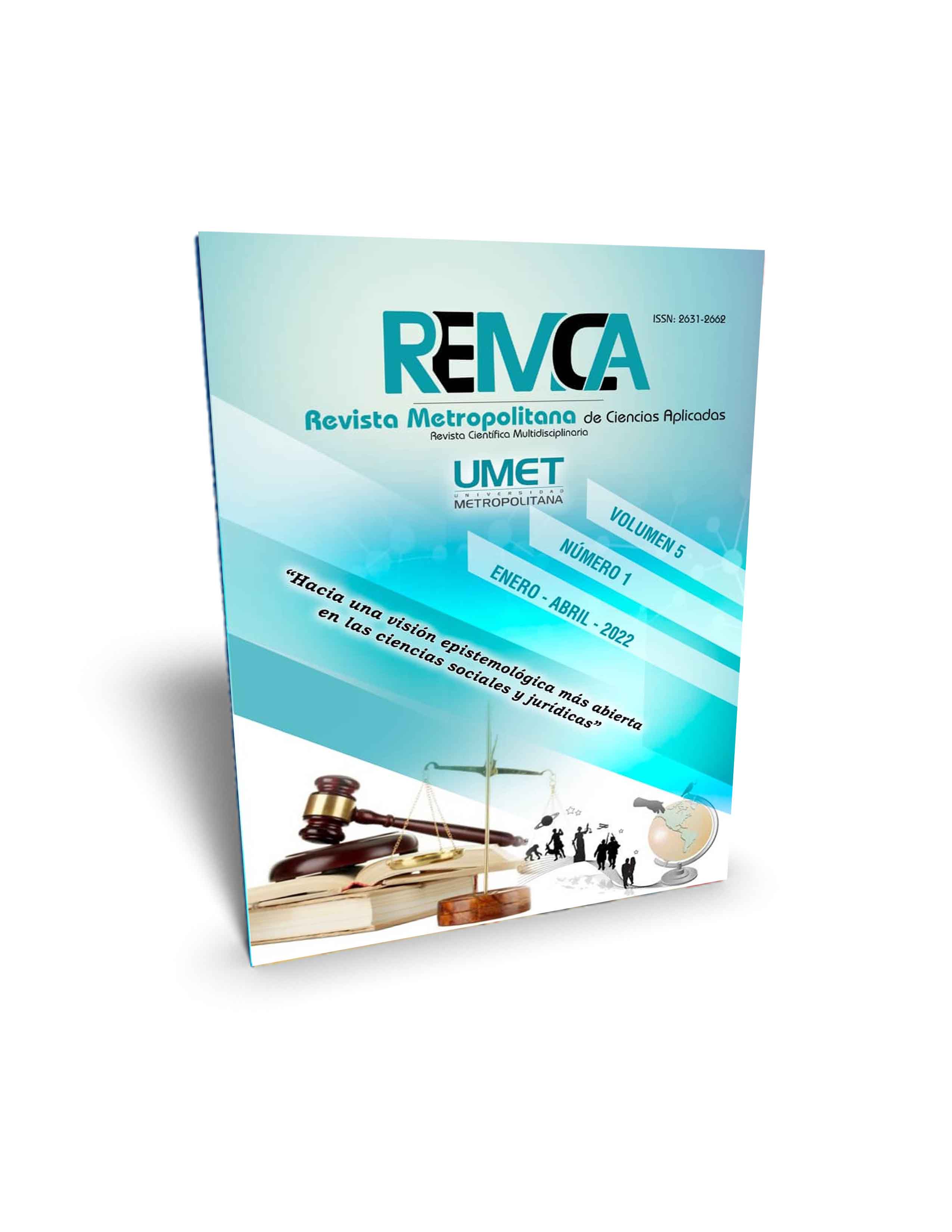The legal figure of workplace harassment in Ecuador based on the reforms made to the labor code and the organic law of public service in 2017
DOI:
https://doi.org/10.62452/c1jtnx47Keywords:
Workplace harassment, mobbing, rights, job, job stabilityAbstract
Ecuador, based on the reforms made to the Labor Code and the Organic Law of the Public Service in 2017, recognizes workplace harassment and establishes prohibitions, sanctions, procedures and measures in order to guarantee the right to work, to a life free of violence, to human dignity and personal integrity. However, only in 2020 is the respective protocol issued as one of the instruments that materialize the legal provisions without incorporating other mechanisms, this situation leads to it being a persistent and normalized practice. The general objective of this research is to study the figure of workplace harassment based on the latest reforms, for this purpose the definition, evolution and legal approach of this legal figure is reviewed; as well as the applicable tools together with the legislation to eradicate the consummation of this class of acts harmful to the rights of the worker. To meet this objective, a qualitative methodology is applied, through the analytical-synthetic and inductive-deductive method. Finally, it is argued the urgency of implementing all the necessary measures to eliminate workplace harassment within the framework of national and international regulations.
Downloads
References
Barón Duque, M. (2003). Percepción y atribución del poder. (Tesis doctoral). Universidad de Sevilla.
Ecuador. Asamblea Nacional Contituyente. (2008). Constitución de la República del Ecuador. Ecuador: Montecristi: Registro Oficial 449. https://www.fielweb.com/Index.aspx?86&nid=1#norma/1
Ecuador. Asamblea Nacional. (2010). Ley Orgánica de Servicio Público. Registro Oficial Suplemento 294. https://www.epn.edu.ec/wp-content/uploads/2018/08/LOSEP.pdf
Ecuador. Asamblea Nacional. (2016). Ley Reformatoria al Código de Trabajo y Ley del Servicio Público. Registro Oficial Suplemento 906. http://www.santodomingo.gob.ec/docs/transparencia/2018/01-Enero/Anexos/a2)/LEY%20REFORMATORIA%20AL%20CODIGO%20DEL%20TRABAJO%20Y%20LEY%20DEL%20SERVICIO%20PUBLICO.pdf
Ecuador. Congreso Nacional. (2005). Código de Trabajo. Registro Oficial Suplemento 167. https://www.iess.gob.ec/documents/10162/0666673d-69cb-46b9-a576-f20c865afac5
Ecuador. Ministerio de Trabajo. (2020). Acuerdo Ministerial Nro. MDT- 2020 – 244. https://www.trabajo.gob.ec/wp-content/uploads/2020/11/2020-Acuerdo-Ministerial-Nro.-MDT-2020%E2%80%93244.pdf?x42051
Organización Internacional del Trabajo. (2019). Convenio sobre la violencia y el acoso. ILO. https://www.ilo.org/dyn/normlex/es/f?p=NORMLEXPUB:12100:0::NO::P12100_ILO_CODE:C190
Pando, M., Aranda, C., Salazar, J., & Torres, T. (2016). Prevalencia de violencia Psicológica y Acoso Laboral en trabajadores de Iberoamérica. Enseñanza e Investigación en Psicología, 21(1), 39-45.
Rodríguez, A. (2012). El acoso laboral (o 'mobbing'). Diario Médico, 1. http://simeg.org/noticiasanteriores/noticias2011/documents/DM6-02-12.pdf
Rojas, A. (2005). El acoso o Mobbing Laboral. Revista de Derecho, 24, 230-245.
Trujillo, M., Valderrabano, M., & Hernández, R. (2007). Mobbing: historia, causas, efectos. INNOVAR. Revista de Ciencias Administrativas y Sociales, 17(29), 71-91.
Downloads
Published
Issue
Section
License
Copyright (c) 2022 Luis David Collantes Velin, María Fernanda Haro Salas (Autor/a)

This work is licensed under a Creative Commons Attribution-NonCommercial-ShareAlike 4.0 International License.
Authors who publish in Revista Metropolitana de Ciencias Aplicadas (REMCA), agree to the following terms:
1. Copyright
Authors retain unrestricted copyright to their work. Authors grant the journal the right of first publication. To this end, they assign the journal non-exclusive exploitation rights (reproduction, distribution, public communication, and transformation). Authors may enter into additional agreements for the non-exclusive distribution of the version of the work published in the journal, provided that acknowledgment of its initial publication in this journal is given.
© The authors.
2. License
The articles are published in the journal under the Creative Commons Attribution-NonCommercial-ShareAlike 4.0 International License (CC BY-NC-SA 4.0). The terms can be found at: https://creativecommons.org/licenses/by-nc-sa/4.0/deed.en
This license allows:
- Sharing: Copying and redistributing the material in any medium or format.
- Adapting: Remixing, transforming, and building upon the material.
Under the following terms:
- Attribution: You must give appropriate credit, provide a link to the license, and indicate if any changes were made. You may do this in any reasonable manner, but not in any way that suggests the licensor endorses or sponsors your use.
- NonCommercial: You may not use the material for commercial purposes.
- ShareAlike: If you remix, transform, or build upon the material, you must distribute your creation under the same license as the original work.
There are no additional restrictions. You may not apply legal terms or technological measures that legally restrict others from doing anything the license permits.




